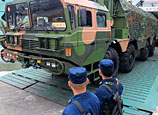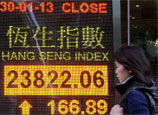
In less than 20 years, Ganqimaodu has become a key entry point for tons of coal destined for China, report Wang Kaihao in Urad Middle Banner, Inner Mongolia, and Zhu Zhe in Ulan Bator
Many of the buildings under construction in Ganqimaodu, a town deep in the Gobi Desert on the China-Mongolia border, have been designed in Russian and Mongolian styles.
This town was little more than barren land 20 years ago, but it has become a hub for trucks shuttling across the border, and is considered one of the largest border crossings between Mongolia and North China's Inner Mongolia autonomous region.
Though the temperatures often fall below -20 C in winter, local stores are doing brisk business.
"We want to make Chinese people feel right at home, even though they might be far from home," said Yuan Yuefeng, the chief of Ganqimaodu Port Authority
According to Yuan, 12.09 million tons of goods passed through Ganqimaodu in 2012, a 13 percent rise on 2011, making it the country's second-biggest road port in terms of transit shipments after Shenzhen.
All except 300,000 tons of that was coal from Mongolia, making this busy town China's largest gateway for importing coal from the country.
There are 15 coalfields in Mongolia, with total reserves estimated at 162.4 billion tons. Of the country's 26 coal producers, 13 are exporters, according to JYD Online Co Ltd, a Beijing-based commodity consultancy.
The first Chinese bank office in Mongolia, the Ulan Bator branch of the Bank of China, was opened on Thursday, becoming only the third foreign bank outlet to open in that country, according to Naidansuren Zoljargal, the governor of the Central Bank of Mongolia.



















![]()
